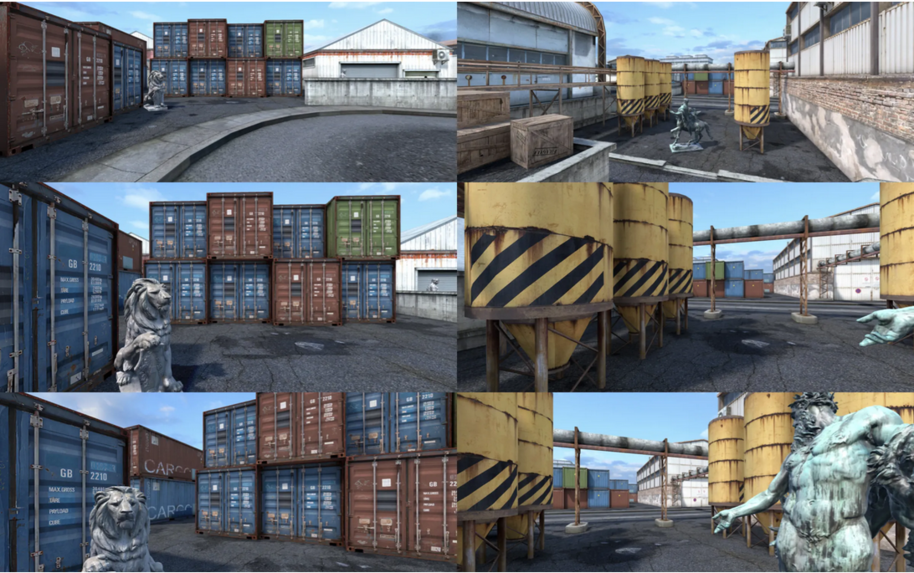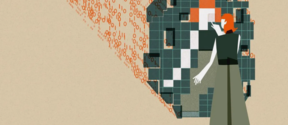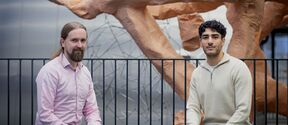Virtual reality becomes more engaging when designers use cinematic tools

Cinematography techniques can significantly increase user engagement with virtual environments and, in particular, the aesthetic appeal of what users see in virtual reality.
This was the result of a recent study conducted by computer scientists at the University of Helsinki. The results were published in May at the prestigious ACM Conference on Human Factors in Computing Systems (CHI).
The team aimed to investigate how principles of composition and continuity, commonly used in filmmaking, could be utilized to enhance navigation around virtual environments.
Composition refers to how the elements in a scene are oriented with respect to the viewer, whereas continuity is about how camera positions between shots can help viewers to understand spatial relationships between elements in the scene.
“Using these ideas, we developed a new teleportation method for exploring virtual environments that subtly repositions and reorientates the user’s viewpoint after teleportation to better frame the contents of the scene”, says Alan Medlar, University Researcher in computer science at the University of Helsinki.
The images below show how this differs from regular teleportation used in modern VR games: from the same starting point (top images), regular teleportation moves the user forward while retaining the same orientation (middle images), whereas cinematic techniques can increase the visual appeal of the environment (bottom images).

Sense of space preserved without motion sickness
The results also address the issue of motion sickness – a common problem for VR users. Usually, to prevent nausea, designers use teleportation as a method for moving through digital spaces. The researchers’ approach is also based on teleportation, but it aims to fix the problems associated with this technique.
“In virtual environments, teleportation can lead to reduced spatial awareness, forcing users to reorient themselves after teleporting and can cause them to miss important elements in their surroundings”, says Medlar.
“The cinematography techniques we used give the designers of virtual environments a way to influence users' attention as they move around the space to affect how they perceive their surroundings”, he continues.
Implications for gaming, museums, and movies
The research carries substantial implications for a range of VR applications, especially as the affordability of VR headsets keeps improving. Video games, virtual museums, galleries, and VR movies could all benefit from these findings, utilizing the proposed methods to craft more engaging and coherent experiences for their users.
Medlar believes the results will be of practical use to virtual reality designers.
“The potential impact of improving navigation in VR and giving designers more tools to affect user experience is huge.”
Publication:
Medlar, A., Lehtikari, M. T. and Glowacka, D. (2024) ‘Behind the Scenes: Adapting Cinematography and Editing Concepts to Navigation in Virtual Reality’, in Proceedings of the CHI Conference on Human Factors in Computing Systems. New York, NY, USA: Association for Computing Machinery (CHI ’24). doi: 10.1145/3613904.3642412.
Exploratory Search and Personalisation (ESP) research group
This news item was originally published on the University of Helsinki website on 14.5.2024
Read more news

How to ensure anonymity of AI systems?
When training artificial intelligence systems, developers need to use privacy-enhancing technologies to ensure that the subjects of the training data are not exposed, new study suggests.
Arto Hellas receives the Nokia Foundation teaching recognition award
Arto Hellas was awarded the inaugural Nokia-OKKA Educational Recognition Award for his long-term efforts in advancing ICT education.GRADSTOP: Early Stopping of Gradient Descent via Posterior Sampling presented at ECAI 2025
HIIT Postdoc Katsiaryna Haitsiukewich presented a full paper at ECAI-2025